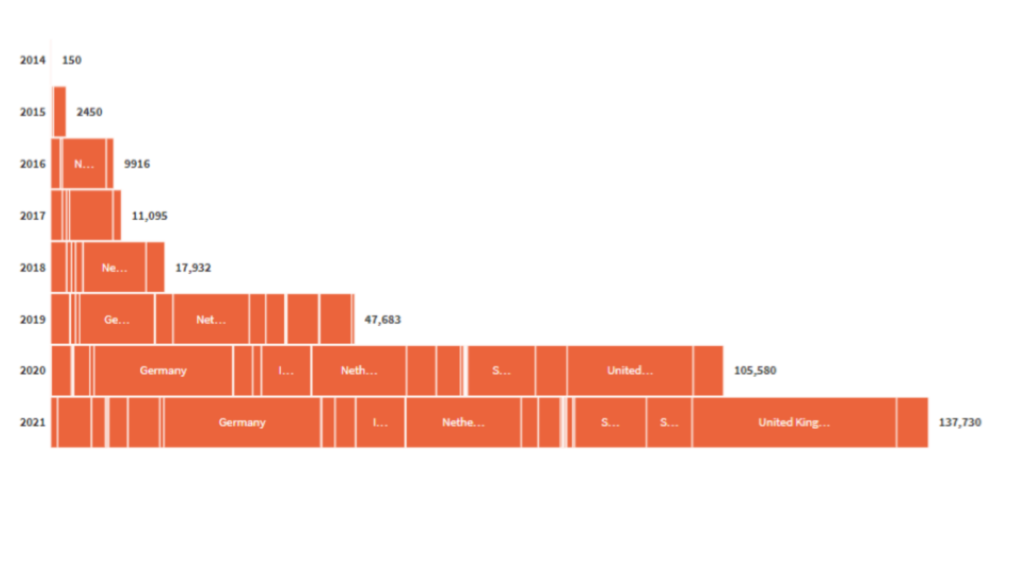On 30th November MyScienceWork organized a webinar to take stock of the journey since the launch of Plan S. The webinar focused on the evolution of publisher policies, open access (OA) business models, and the challenges and opportunities related to these topics. This post provides a recap of the webinar, particularly the conversation among Ashley Farley (Head of Open Access Policy at the Bill & Melinda Gates Foundation), Nick Campbell, Ph.D. (Vice President of Academic Affairs at Springer Nature), and Johan Rooryck (Executive Director of cOAlition S). The webinar was moderated by Sally Ekanayaka of MyScienceWork, who is also the author of this post.
If there ever was a topic that stirred the scholarly publishing pot, it would be Plan S.
Much has been said, both critical and supportive, from its impact on society publishers to why the rights retention strategy probably won’t work. So, in an effort to ask, “Hey! Is Plan S, the next tipping point in scholarly communications, here for the long haul?” I put together a webinar for authors, publishers, libraries, and everyone in between to discuss Plan S and the movement towards open access (OA) publishing.

The conversation began with a reflection upon the importance of “Open”.
I framed the webinar this way in part because it is important for contributors and other research stakeholders to understand that OA publishing is not (only) a box-checking component to please funders or politicians, but is in fact an important readjustment of academic publishing and knowledge sharing processes. I wondered how much there’s to be discussed (and learned) that hasn’t already been explored. The answer turned out to be “a lot.”
Nick Campbell, Vice President for Academic Affairs at Springer Nature, began his remarks with the assertion that “The benefits that Open Science are going to deliver are huge for both research and for broader society.” While presenting his overview of the role of Open Access in a changing publishing paradigm, he went on to say that, “It can make a huge difference just making that transition. If you think about scholarly communication, it accounts for perhaps 1% of all expenditure on research, but it’s a really important 1%. By moving to models where we get rid of paywalls around research articles, we can improve on the return on investment of the rest of the 99%, by helping improve reproducibility and ensuring faster innovation, and we’ve really seen that play out in real time during the Covid pandemic.”
Plan S Basics
We see that 2022 is bringing significant changes for researchers regarding how to publish articles and papers. First, there is Horizon Europe, where the Commission has integrated Plan S recommendations within its programs, mainly by putting in place the Open Research Platform, which is already proving to have a considerable impact on the European R&D landscape. Then there’s cOAlition S expanding its global footprint, welcoming new members to the consortium amidst talks of late transformation towards open access, postponing deadlines, and the famous hybrid journals debate.
In light of these changing times, who better than the Executive Director of cOAlition S, Professor Johan Rooryck, to discuss milestones and new developments around Plan S? Johan provided an overview of the organizational structure of the worldwide alliance that is cOAlition S and the principles supporting Plan S, followed by a robust review of what they aim to accomplish. When asked to address the WHY factor, Johan said, “we want all research articles to be fully reusable immediately. There’s about 2 million research articles published every year and these need to be made available not only to human researchers, but also to new AI technologies that allow us to harvest data and uncover knowledge. We never know where the next big idea will come from and this is why we need Open Access.”
From implementation, to different routes to compliance (including transformative arrangements), much was said on the topic of supporting new publishing models including Johan’s recommendations for Diamond OA publishing. He offered some strong messages and here’s a couple that caught my attention.
- “We do not want individual researchers to pay with their grandmother’s inheritance. We want the research money of the funders to pay for those publications….We also are committed to changing the research assessment of researchers. We no longer want to rely on quantitative factors, such as the general Impact Factor or the prestige of the journal where the research is published, but we want to evaluate the quality of the research. Many of our funders are committed to that in a sense that they have made it clear that researchers applying for money will be evaluated according to new quality metrics.”
- “We favor no Open Access business models. You could be Gold, Green or polka dot Open Access, we take it. We have no preference.”
Plan S So Far: The Good, the Bad and the Ugly
Ashley Farley, Head of Open Access Policy at the Bill & Melinda Gates Foundation, observed that publishers have reacted along a broad spectrum of levels of support and that “behavior change isn’t easy or quick and it’s really important that we count the successes where we can. Open access has been a long journey.”
Speaking of the Gates Foundation’s first year experience with Plan S, 11 months Ashley said “it’s a lot of education, talking, and webinars which is a great way to disseminate these changes….There’s strength in numbers. One of the biggest benefits of being a part of the cOAlition is now we get to work with a global network who are advocating for Open Access and collectively working towards common good.”
Ashley also addressed the question of predatory publishers and illegal access threatening not only the integrity of young scientists and scholars, but the overall credibility of science as a whole, saying “when we talk about inequities in science, the increasing barriers to both read and publish, the choices authors make have an impact on what becomes the prevailing models. The solution would be to really open up peer review. There’s a lot of trust that goes into that as a reader and opening up and having that transparency would be critical.”
Fair enough. But then what about the complex funding patterns of the moment? Granted, article processing charges (APCs) can accelerate the transition to OA publishing, but what about the APCs “in the wild”? What becomes of those that are funded from sources outside of centrally managed libraries or institution budgets? How can they be better identified or tracked? Echoing the concern that “APC funding still remains untracked to a vast extent and not fully understood by the community,” Nick said. “There is huge regional variation as well, both in terms of the way Open Access is funded and the pace of change, which challenges transition.”
An interesting observation was the likemindedness of the experts from Springer Nature and the Bill & Melinda Gates Foundation when it came to leveraging policy changes to take diversity, equity and inclusion into real action. “Equity is a huge problem that we do need to overcome if we are to make this transition in a sustainable and equitable way. Let me be frank. I think as a research ecosystem, we need a better way, beyond waiver policies, of taking the lower middle income countries with us on this path so they’re not inconvenienced or locked out from publishing like they have been locked out from reading papers sometimes,” said Nick.
“We’re having a real shift in recent years in how we think about OA and removing barriers for reading, publishing and engaging the research community that is aligned with our diversity, equity and inclusion goals,” stated Ashley. On that front, “taking time to leverage policy changes to take diversity, equity, and inclusion into real action, especially through publishing, is a way that we can really make sure that we’re creating an equitable research ecosystem, so there’s no financial barriers to participation either in publishing or reading.”
Much was mentioned of transformative agreements (TAs), the offspring of years of negotiating among consortia, funders, institutions, and publishers, which are clearly playing an influential role in this journey of transition to full OA publishing. “One of the key ways in which we are achieving more open access transition is through transformative agreements,” said Nick while commenting about Springer Nature achieving a total of1 million Gold OA articles, a first in publishing.
Also commenting on TAs and the cOAlition’s stance, at least until 2024, Johan said “this is something that we support because we think it is an important lever towards Open Access. This has been a huge success for Springer and Nature journals, but it is also a huge success for all publishers. Between 2015 and 2021, there’s a massive increase in the number of articles that have been made Open Access through this mechanism.”

Source: ESAC Transformative Agreement Registry
The Future for OA and Plan S
So what’s down the road on this ongoing long journey?
“I think to get to full Open Access, with all these issues, we need all stakeholders to work together on this. We need researchers, publishers, institutions, and funders. All of us need to work on the solutions to get there,” said Nick. This statement was backed by Ashley who added, “we’re really at an interesting point where I’m seeing more robust decisions and more actions being taken than I think we have previously, so I’m hopeful that we will get there.”
Perhaps the largest takeaway was the collective agreement on the need for more mission-aligned, community driven discussions taking place about how money ought to be spent, how data is to be protected, and how actions of publishers and authors should be tracked. The information provided by the speakers in this webinar serves as a starting point. . If you missed it, or and would like to review it again — check out the full recording below:
Discussion
2 Thoughts on "Guest Post – Plan S and Scholarly Publishing: Some Lessons Learned"
I am all for free access especially to the Microsoft suite not to mention big Macs!
While I’m all for OA, I still have issues with statements like “by helping improve reproducibility and ensuring faster innovation”.
Really? Those that actually reproduce and innovate don’t have access to the scientific results published on the basis of which they are supposed to do their work?
I think this is a rather flawed (as in not grounded in data and reality) statement to motivate a good thing.



